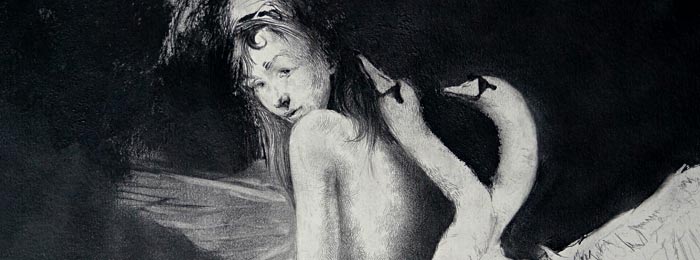Question from Anastasia, Drawing Academy student
Dear Vladimir,
I have seen some drawings with very dark backgrounds. When I try to shade dark areas, the graphite marks become glossy.
How to achieve dark tones in graphite drawing?
What is the best technique to render really dark values?
Many thanks,
Anastasia
Hi Anastasia,
When it comes to making very dark tones in graphite pencil, you need to consider the following:
1. How dark do you need to go? The beauty of graphite lies in its grey appearance. There are two things you have to keep in mind – the correct tonal balance of the artwork, and the contrast between tones. A dark tone will appear even darker when placed next to the light one. Plan the tonal balance of your piece in advance; in many cases you should probably go lighter in light areas than darker in shadows.
2. Go for a softer pencil grade. Every graphite grade has its limits; you need to know the limitations of your drawing tools and plan your artwork in such a way that you don’t have to jump to a different pencil just to achieve a darker tone.
3. Gradually build up the tonal values of the entire drawing. Render tonal values in multiple layers. It is like developing a photograph – it has to look complete throughout the entire process of drawing. It is an amateur’s mistake to render one area of an artwork to completion while leaving other areas of the drawing untouched while drawing in graphite pencil. There are two common cases when people do that – when copying from photos (“shading by numbers”), or when they lack proper art education and do not know professional drawing techniques.
4. Apply proper pencil pressure, making sure your drawing does not go glossy from hard pencil strokes.
5. When you see really black pencil drawings, they might be done in black pencil rather than graphite. Carbon pencils, for example, will deliver much darker values than any graphite pencil can provide.
6. You can achieve very dark values in graphite using the “know-how” creative technique. This very special drawing technique is done in graphite powder and is described in the Drawing Academy video lessons presented by Natalie Richy:
This method is not taught anywhere else.
7. Remember that “less is more”. In many cases, you don’t want to overwork your drawing. Leave something for the viewer’s imagination. Often, this means that you should stop working on a piece just before you think it is finished. This includes not going overboard with dark rendering.
Hope this helps.
Best regards,
Vladimir







I was just going through the same dilemma, trying to hatch a background in drawing that was already kind of dark to begin with. Although I read all Vladimir’s advises and ‘I though’ I learned them, I still have the amateur’s tendency to overwork one part rather than render values over the whole picture! the price of this is just frustration, the answer, I think, is plain discipline and patience.
G. Mello